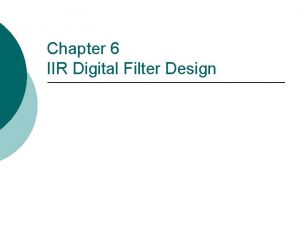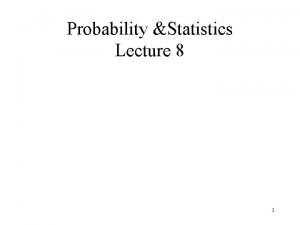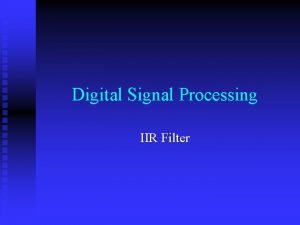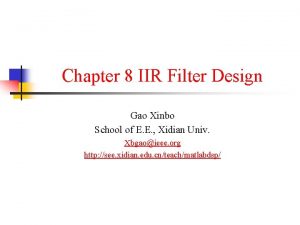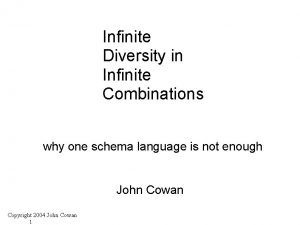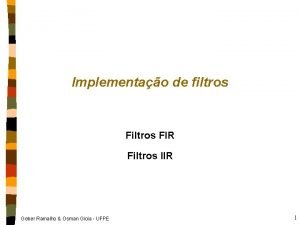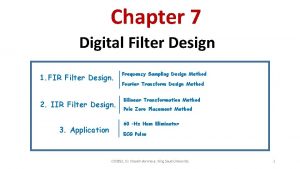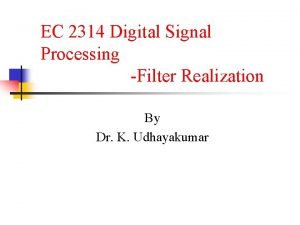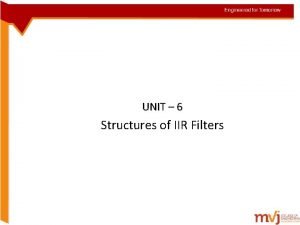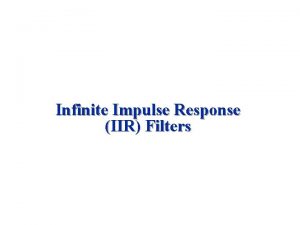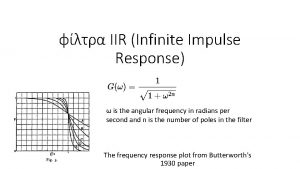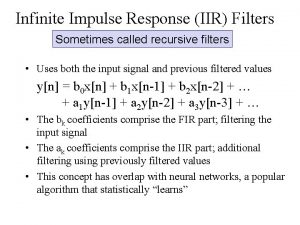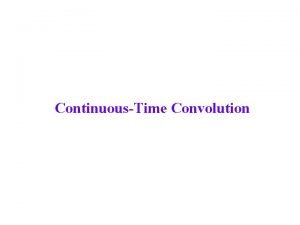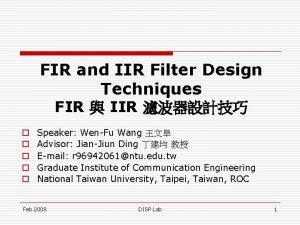Lect 7 Design of infinite impulse response IIR








- Slides: 8

Lect 7 Design of infinite impulse response (IIR) digital filter

7. 1 Design of infinite impulse response (IIR) digital filter 7. 2 Design stages for digital IIR filters 1) Filter specification : ( Type of the filter and specification). 2) Approximation or coefficient calculation. 3) Realization, which is simply converting the transfer function into a suitable filter structure. 4) Analysis of errors due to the calculation of coefficients and using a finite number of bits. 5) Implementation, which involves building the hardware and/or software.

7. 3 Stage 1: Performance Specification. include the following 1) Signal characteristics 2) Frequency response 3) The manner of implementation 4) Cost.

7. 3 Stage 2: Calculation of IIR filter coefficients The task of this stage to select one of approximation method and calculate the value of ���� and ���� in eq (7. 2). The main two methods are: 1) Pole-Zero method: This method is based on place poles and zero in z-plane. This method is used for simple filter such as notch filter. 2) Design an analogue filter satisfying the desired specifications and then to convert it onto an equivalent digital filter. Most digital IIR filters are designed this way.

7. 3. 1 Pole-Zero placement method a) When a zero is placed at a given point on the z-plane, the frequency response will be zero at the corresponding point. b) A pole on the other position will produce a peak at the corresponding frequency point as shown in fig (7. 2). c) Thus, by placing poles and zeros on z-plane, we obtain simple lowpass on other selective frequency response.

7. 3. 2 Impulse invariant method (first method of converting analogue filters into equivalent digital filter) - In this method, starting with a suitable analogue transfer function H(s), the impulse response h(t) is obtained using the inverse of the Laplace transform. - The h(n. T) is the sampled impulse response can be obtained by using sampling to h(t) where T is the sampling interval. - H(z) can be obtained by z-transform.

7. 3. 3 Bilinear z-transform (BZT) method (second method of converting analogue filter into equivalent digital filter) BZT is the more important method of obtaining IIR filter coefficient. In the BZT method, the basic operation required to convert an analogue filter H(s) into an equivalent digital is to replaces as follow

7. 4 Designing high pass, band pass and band stop filter 7. 6. 1 Calculating IIR filter coefficients (method 1)
